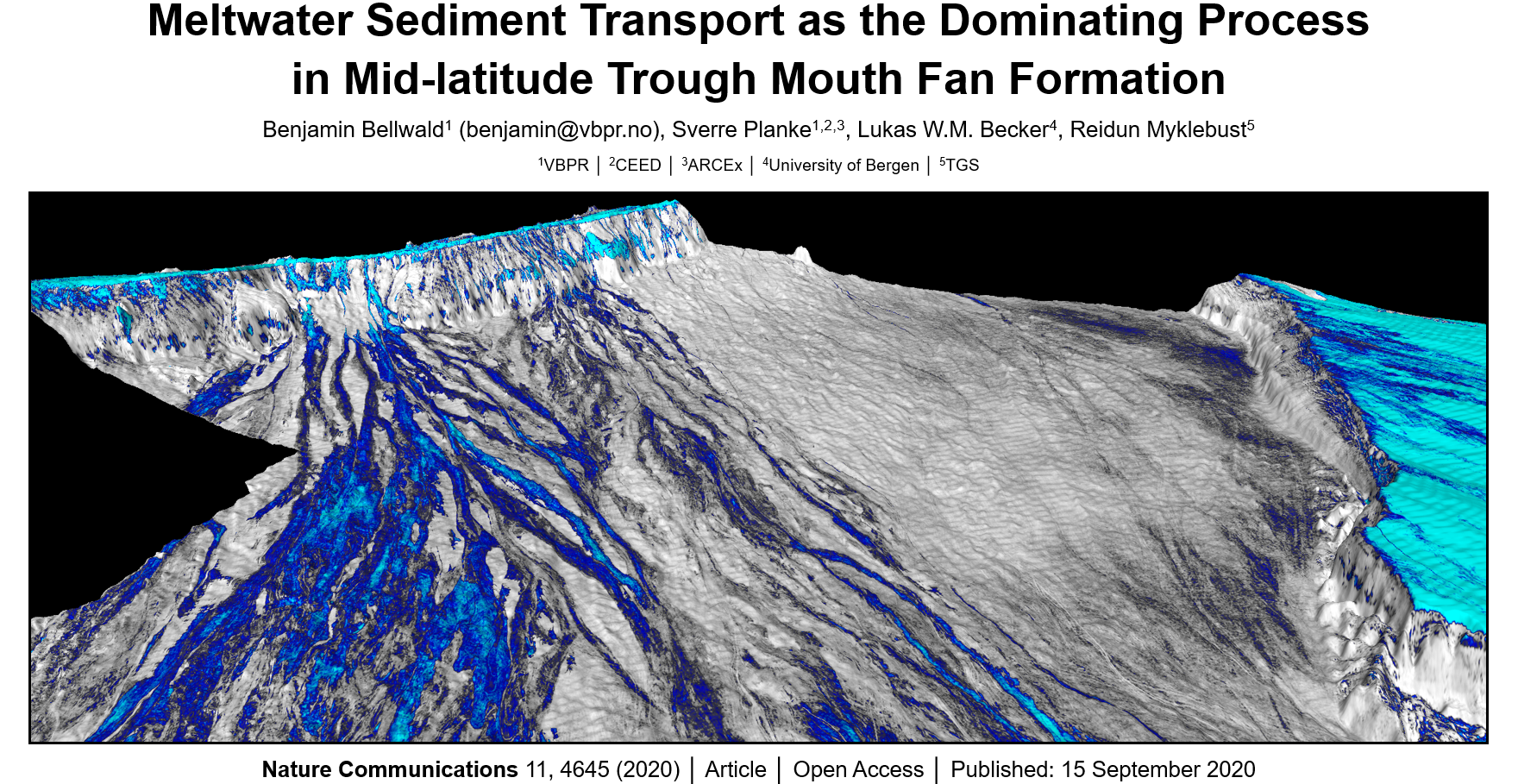Benjamin Bellwald, VBER with article in the prestigious Nature Communications
Trough mouth fans comprise the largest sediment deposits along glaciated margins, and record Pleistocene climate changes on a multi-decadal time scale. Here we present a model for the formation of the North Sea Fan derived from detailed horizon and attribute interpretations of high-resolution processed 3D seismic reflection data. The interpretation shows that stacked channel-levee systems form up to 400 m thick sedimentary sequences. The channels are elongated and can be traced from the shelf edge towards the deep basin for distances of >150 km, and document long-distance sediment transport in completely disintegrated water-rich turbidite flows. Downslope sediment transport was a continuous process during shelf-edge glaciations, reaching accumulation rates of 100 m/kyr. Our data highlight that exceptionally large volumes of meltwater may discharge to the slopes of trough mouth fans and trigger erosive turbidite flows. We conclude that freshwater supply is likely an underestimated factor for sedimentary processes during glacial cycles.
